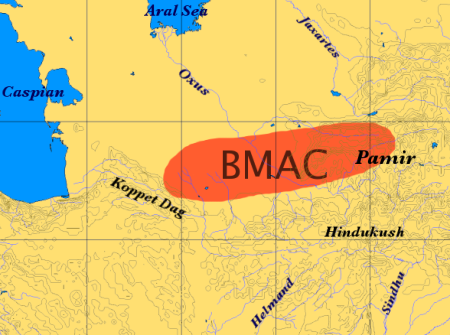|
Vedic Era
The Vedic period, or the Vedic age (), is the period in the late Bronze Age and early Iron Age of the history of India when the Vedic literature, including the Vedas (ca. 1300–900 BCE), was composed in the northern Indian subcontinent, between the end of the urban Indus Valley civilisation and a second urbanisation, which began in the central Indo-Gangetic Plain BCE. The Vedas are liturgical texts which formed the basis of the influential Brahmanical ideology, which developed in the Kuru Kingdom, a tribal union of several Indo-Aryan tribes. The Vedas contain details of life during this period that have been interpreted to be historical and constitute the primary sources for understanding the period. These documents, alongside the corresponding archaeological record, allow for the evolution of the Indo-Aryan and Vedic culture to be traced and inferred. The Vedas were composed and orally transmitted with precision by speakers of an Old Indo-Aryan language who had migrated ... [...More Info...] [...Related Items...] OR: [Wikipedia] [Google] [Baidu] |
Indian Subcontinent
The Indian subcontinent is a list of the physiographic regions of the world, physiographical region in United Nations geoscheme for Asia#Southern Asia, Southern Asia. It is situated on the Indian Plate, projecting southwards into the Indian Ocean from the Himalayas. Geopolitically, it includes the countries of Bangladesh, Bhutan, India, Maldives, Nepal, Pakistan, and Sri Lanka."Indian subcontinent". ''Oxford Dictionary of English, New Oxford Dictionary of English'' () New York: Oxford University Press, 2001; p. 929: "the part of Asia south of the Himalayas which forms a peninsula extending into the Indian Ocean, between the Arabian Sea and the Bay of Bengal. Historically forming the whole territory of Greater India, the region is now divided into three countries named Bangladesh, India and Pakistan." The terms ''Indian subcontinent'' and ''South Asia'' are often used interchangeably to denote the region, although the geopolitical term of South Asia frequently includes Afghanist ... [...More Info...] [...Related Items...] OR: [Wikipedia] [Google] [Baidu] |
List Of Rigvedic Tribes
This is a list of ancient Indo-Aryan peoples and tribes that are mentioned in the literature of Indic religions. From the second or first millennium BCE, ancient Indo-Aryan peoples and tribes turned into most of the population in the northern part of the Indian subcontinent – Indus Valley (roughly today's Punjab), Western India, Northern India, Central India, and also in areas of the southern part like Sri Lanka and the Maldives through and after a complex process of migration, assimilation of other peoples and language shift.Mallory, J.P.; Douglas Q. Adams (1997). Encyclopedia of Indo-European Culture. London: Fitzroy Dearborn Publishers. . Ancestors *Proto-Indo-Europeans (Proto-Indo-European speakers) **Proto-Indo-Iranians (common ancestors of the Iranian, Nuristani and Indo-Aryan peoples) ( Proto-Indo-Iranian speakers) ***Proto-Indo-Aryans (Proto-Indo-Aryan speakers) Vedic tribes * Alina people (RV 7.18.7) * Andhras * Anu (RV 1.108.8, RV 8.10.5) * Āyu * Bhajerath ... [...More Info...] [...Related Items...] OR: [Wikipedia] [Google] [Baidu] |

